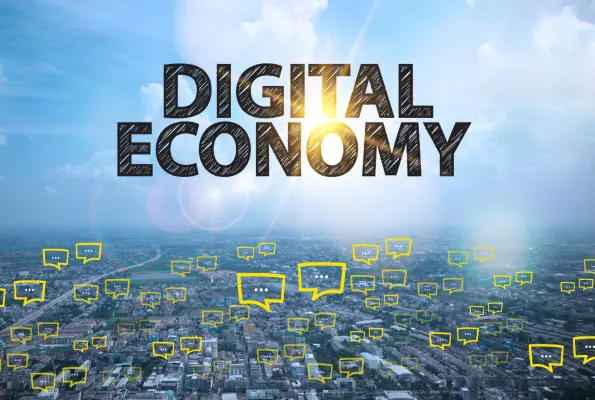The MENA (Middle East and North Africa) region’s digital economy is set to hit 200 billion dollars in 2025, a scale that turns hand‑waving about transformation into an audit of who is building durable value and who is merely buying growth.
If more than 11% of private consumption is now digital, the real question is not whether the shift is happening, but who captures the annuity streams from subscriptions, logistics density, and payment rails as analog habits finally lose their grip.
The headline figure is not just e‑commerce; it is a broad portfolio spanning ride-hailing, foodtech, healthtech, edtech, travel, home services, gaming, OTT, classifieds, and the payments backbone that stitches these behaviours together.
Quick commerce alone is projected to be a 6.1-billion-dollar market in 2025, more than 10% of online retail, and that tells you something uncomfortable for incumbents who still think delivery is a nice‑to‑have rather than the point of sale itself.
If you doubt the inflexion, track where time is spent, because Saudi users are shifting their digital media diets toward learning, with development content taking a third of attention, up from under a fifth in 2022. That is not a niche; it is a labour market signal.
The winners’ playbook
Who wins at 200 billion? The platforms that turn sporadic usage into predictable subscription cash flows, not by gimmicks, but by bundling high‑frequency services that earn habit, trust, and time. Subscriptions are on course to outnumber active digital users by year‑end, a stark proxy for depth of engagement that cannot be faked by ad spend once retention cohorts turn over. That should focus founders on reliability, selection, and seamless payments rather than vanity downloads.
The UAE provides the control case, with mature‑market penetration and roughly four subscriptions per user, proof that multi‑vertical ecosystems can drive lifetime value if they solve daily pain points better than any single‑purpose app can manage.
Elsewhere in MENA, active user penetration of around 60% is both a problem and a prize, a reminder that growth still lives in localisation, lower‑cost on‑ramps, and service quality, not just in launch‑day press releases.
Capital markets are beginning to call the bluff, as roughly ten digital‑first IPOs could print in 2025 after a year when a third of proceeds already went to such listings. This means unit economics are no longer a private conversation. Ask yourself, if the pipeline is real and the proceeds material, who is ready for quarterly scrutiny on churn, contribution margins, and cost of capital when money is no longer free?
What to test next
Test whether quick commerce can escape grocery physics by scaling beauty, pharma, and electronics without torching margins, because last‑mile density is a moat only if the basket follows. Test whether edtech and learning‑first media can convert attention into credentials and wages, because without earnings power, the “learning beats entertainment” story is sentiment, not strategy. Test whether super‑apps can keep cross‑sell rates rising once customers have picked their two preferred ecosystems, since the fight for wallet share gets harder, not easier, at saturation.
Finally, test governance in public markets, because a cohort of digital listings will either validate the flywheel or expose a gap between narrative and numbers, and the audits will be merciless.
Here is what the 200 billion benchmark demands: regulators must decide whether to protect entrenched analog interests or enable the capital and data flows that unlock faster innovation cycles, because halfway rules produce neither competition nor stability.
Operators need to stop pretending that growth alone justifies valuations when public investors will price in cohort retention, contribution margins, and free cash flow from day one of trading. Venture funds that wrote checks on narratives must reckon with exits that depend on demonstrable unit economics, not narrative momentum, and LPs will remember who called the cycle correctly.
For societies across the region, the digital layer is now infrastructure, which means access, affordability, and resilience are public questions, not just commercial ones, and the answers will shape income distribution and social mobility for the next generation.
If MENA gets this transition right, digital becomes the scaffold for diversified, knowledge‑intensive economies that can compete globally. But if unit economics collapse or monopolies calcify, the 200 billion will look less like progress and more like a very expensive detour.



